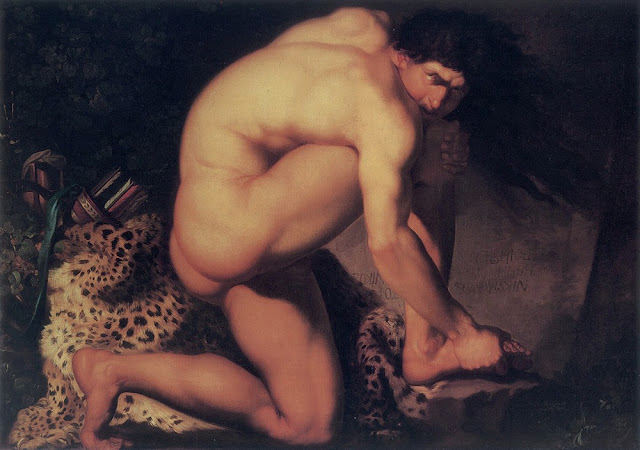1782
1793
1774-75
1800
1775
1800
1784
1783
1770s
1770s
1772
Here is another contender for membership in my personal collection of forgotten painters. Nikolaj Abraham Abildgaard (1743–1809) made a big artistic splash in his native Denmark, loaded with honors and commissions during his lifetime, but never seriously regarded outside his own local world – and largely forgotten even there after his death. If he is referred to nowadays, it is with condescension as an "academic painter" or "cold theorist".
In my own observation there are two major strands to Abildgaard's work. First came the great big nudes and mythological decorations of the 1770s when he chose to study in Rome (even though Paris was the center of the art world by that time). These paintings appeal to me because you can see Abildgaard struggling to fit the Baroque forms he was seeing all around him on every Roman wall and ceiling into the prevailing Neoclassical straitjacket.
Later, back home in Scandinavia, as teacher and court painter, he got interested in narrative scenes based on literary sources, clothing his figures (just like his famous and fashionable contemporary Fuseli, and also just like his then-obscure and unknown contemporary William Blake) in thin clinging early-Romantic draperies.
For my purposes, both phases of the career are full of entertainment value. And the idea of dismissing this artist as coldly academic seems preposterous – in the face of his fascinating weirdness.











